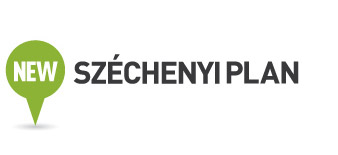Faculties

Vehicle technology, transport and logistics
Vehicle technology, transport and logistics (JKL - Járműtechnika, közlekedés és logisztika), which also include shipping, are together the catalysts of a modern, global economy. Within the EU, these three domains produce nearly 15% of the total GDP and together they employ the highest number of people. In Hungary, the automotive industry is especially dominant as it provides 14% of the industrial output and 25% of the total export. One in seven employees receives a wage from the vehicle manufacturing, transport and shipping (logistics) industries and between one third and one half of the cost of any product is determined by logistics related costs.
Currently, BME is capable of providing integrated solutions to complex RD problems in the JKL area, even though synergic opportunities have only been partially exploited. However, sustainable development of the economy generates a number of challenges that creates continuous research requirements in the JKL area. We intend to develop a number of research strategies by building on the current strengths of the JKL domain which will enable us to satisfy these research requirements at a higher level.
Keeping in mind transport policy considerations and following comprehensive research derived from best international practices, we wish to achieve improvement in the following areas:
- Vehicle technologies by improving energy efficiency and minimising environmental load
- Intelligent vehicle technologies
- Intelligent transport systems
- Efficient transport operation and management systems
- Integrated logistics systems
- Management systems
With regard to developments in the field of human resources, as a general rule the development of quantitative human resources in the logistics domain of the JKL research area is essential, where retention of the existing capacities is justified. The development of quality management is equally important in all three domains. Beyond this, replacement opportunities should be examined and suitable researchers promoted to leadership roles.
As regards research infrastructure, the tooling requirements for the JKL area are not homogenous. In the vehicle technology domain, the modernization of existing laboratory facilities is a fundamental requirement. In the transport areas, some quantitative development is also needed as well as on the technological side. Finally, it is logistics where laboratory development is most acutely needed, both quantitatively and qualitatively.
For a better utilization of JKL scientific achievements, it is important that BME’s knowledge is kept up-to-date about the results and applications of the rapidly developing automotive industry, transport and logistics technologies and leadership-management methods, thus enabling BME to react rapidly and to be able to find solutions to technical, operational and management problems that may occur. Many potential clients are not, or are only partially aware of modern solutions and procedures. This may mean that proactivity may result in new RD tasks for BME.
As regards the industrial sphere, the primary task will be to keep up the existing relations. In the domain of logistics, expansion is the most essential need. Strategic partnerships and long term agreements should be sought with key clients. Proactive, supportive attitudes towards government and public administration representatives should be the norm.
There are various financial resources for the development of research. International tenders may indirectly contribute to the development of such innovation potential and resources. Here we should underline the RD Framework programme and other research programmes of the EU. The relevant domestic programmes specifically call for supporting the development of RD potential. Funding can be secured for laboratory development and temporary employment of researcher replacement. Within the framework of thematic calls which relate to the above themes, researcher wages, related material costs, and procurement are possible items. The most elastic use of funding arises from the completion of outside orders. For the time being, RD development funding from the central budget should not be included in this equation.
The completion of the JKL strategy should be followed by systematic monitoring. Operative tools of monitoring are the indicators measuring progress. Target values should be analysed annually and at this point the JKL project leadership should assess the results. In case of deviation from projected figures, the reasons for such deviance(s) should be examined and corrective interventions determined. Besides these indicators, JKL RD trends should be regularly monitored to facilitate rapid responses to any changes.


